The moon meets up with the Seven Sisters tonight. Here's how to see it
On the evening of Oct. 9, a waning gibbous moon visits the famous Pleiades Star Cluster — the Seven Sisters — in Taurus. Binoculars should bring out the cluster of stars from the brilliant light of the moon
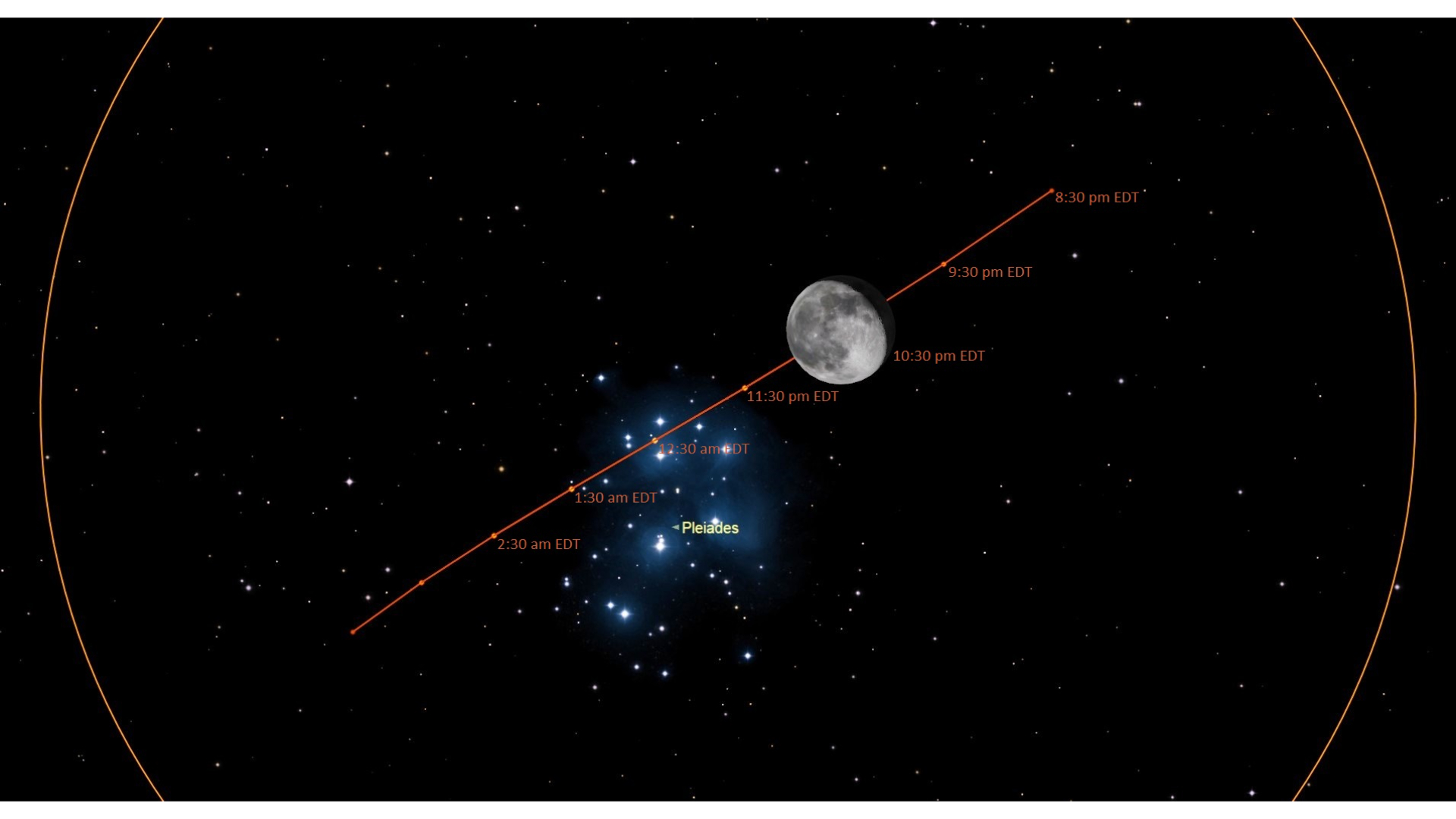
If you missed the moon passing in front of the Pleiades this past January, February and July, the next show for North America comes our way on Thursday night, Oct. 9. This time the moon will be a waning gibbous (86% sunlit), so stars belonging to the Pleiades cluster will disappear behind its bright limb and reappear behind the thin crescent of darkness on the moon's trailing side.
You're going to need a telescope; binoculars likely will not provide enough magnification for following the stars in their final moments as the moon's rather glary, sunlight edge creeps up to them. With a telescope use an eyepiece that provides you with at least 50-power.
Conversely, stars will be much easier to see when they suddenly pop back into view from behind the moon's dark limb, and in this case, binoculars probably will suffice — especially if you mount them on a tripod.
When to watch
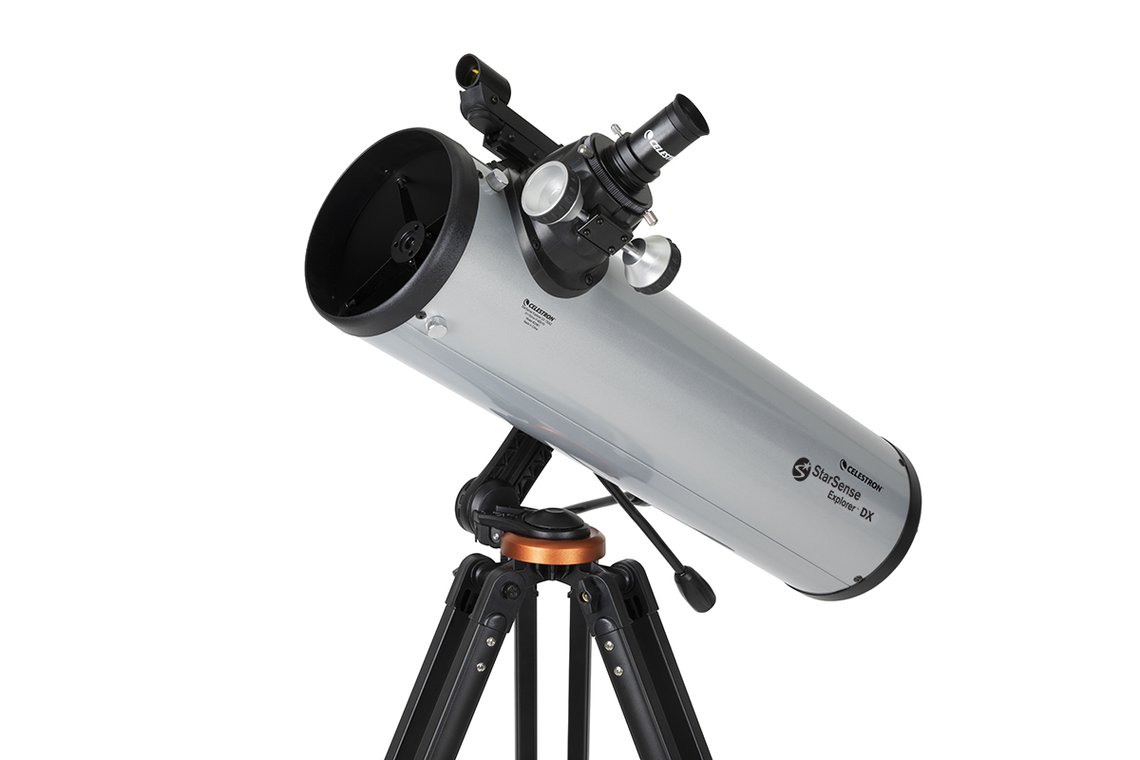
Looking for a telescope for the next night sky event? We recommend the Celestron StarSense Explorer DX 130AZ as the top pick for basic astrophotography in our best beginner's telescope guide.
The details vary depending on your location, but out in the western U.S. and Canada the moon will begin to encroach upon the Pleiades — popularly known as "The Seven Sisters" — during the early-to-mid evening hours, although somewhat low (around 10 degrees) in the east-northeast sky.
For the eastern U.S. and Atlantic Canada, the show will begin within an hour either side of local midnight (before midnight for the Eastern time zone, after midnight in the Atlantic time zone), with the moon considerably higher; roughly halfway up in the eastern sky. In most cases, the moon's passage across the star cluster will take about two hours.
As an example, from Chicago, among the cluster's seven brightest stars, observers can see the moon occult Electra (magnitude 3.7), Taygeta (4.3), and Maia (3.8) at about 10:27 p.m., 10:53 p.m., and 10:55 p.m. CDT, respectively along the moon's bright limb. These three stars will reappear from behind the moon's dark limb at, respectively, 11:20 p.m., 11:38 p.m. and 11:55 p.m. CDT. From Chicago, the moon will miss four of the seven brightest Pleiades stars, Alcyone (2.8), Atlas (3.6), Merope (4.1), Pleione (5.0). Of course, many other (fainter) stars will also be occulted during the moon's passage through the cluster.
Specific times and zones of visibility
Courtesy of the International Occultation Timers Association (IOTA), pages are available that provide timetables for hundreds of locations for four stars in the cluster.
Breaking space news, the latest updates on rocket launches, skywatching events and more!
Each page provides times for the disappearance and reappearance of the star in question. The times are given in Universal Time (UT) which is the same as Greenwich Mean Time (GMT). Since the occultation occurs after midnight UT, the calendar date is Oct. 10. When converting to your local time zone, the times will be before local midnight on the previous date (Oct. 9), the exceptions being for Atlantic Canada.
As an example: For Alcyone, as seen from Denver, Colorado, this star will disappear at 4:32:30 UT on Oct. 10. Denver is in the Mountain Time Zone and is six hours behind Universal Time. So, for the Mile-High City, Alcyone will disappear at 10:32 p.m. MDT on Oct. 9. Alcyone is predicted to reappear at 4:51:21 UT, which corresponds to 10:51 p.m. MDT.
The three images below show how the moon will interact with the Pleiades star cluster as seen from Denver, CO during the mid-to-late evening hours of Oct. 9.
The views are in one-hour increments, respectively from left-to-right, 9:30 p.m. MDT, 10:30 p.m. MDT and 11:30 p.m. MDT. The moon generally moves at its own diameter (one-half degree per hour) from west-to-east and will take about two hours to pass completely through the cluster. Note how much smaller the moon appears relative to the Pleiades (which measures roughly one-degree across).
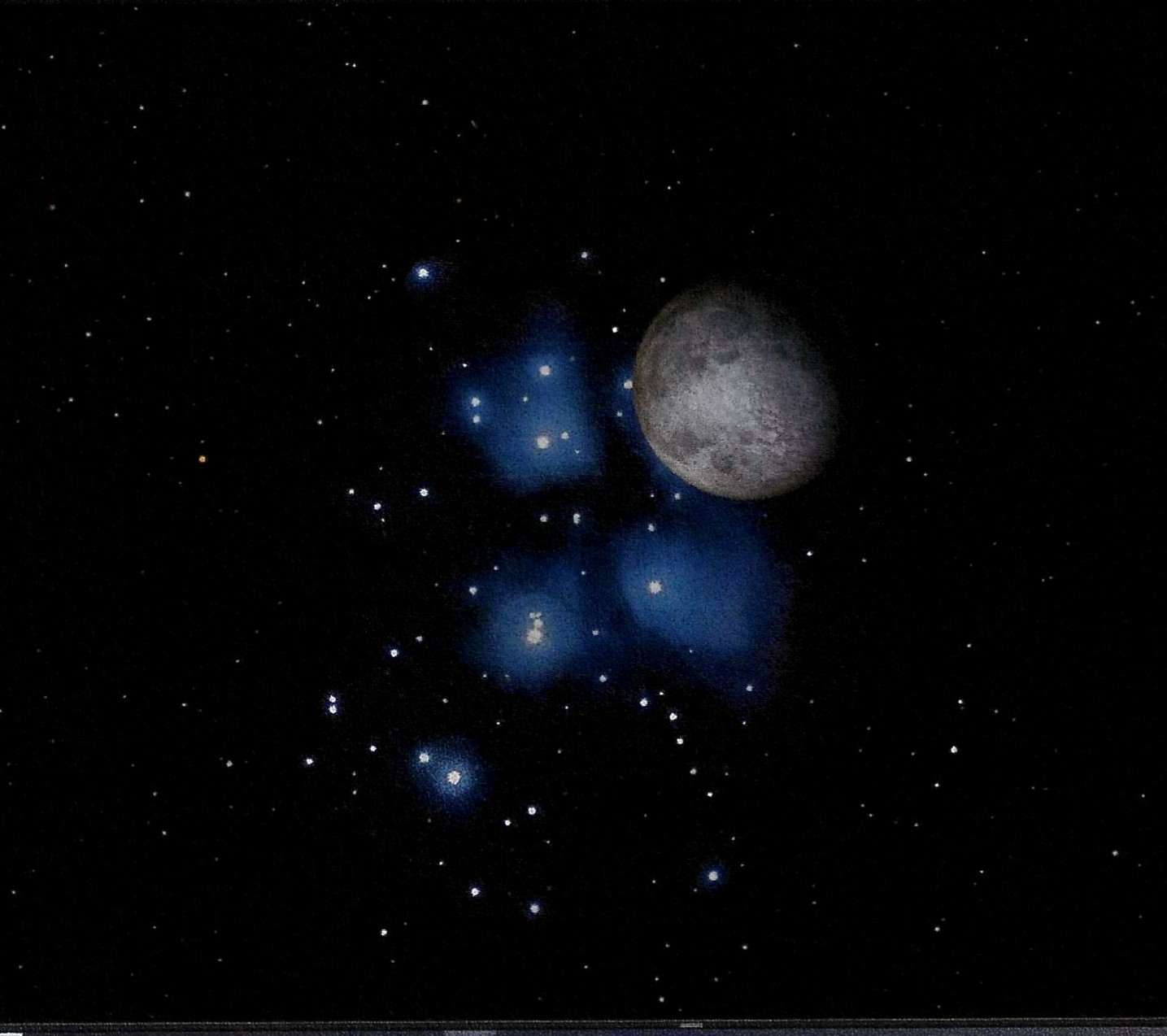
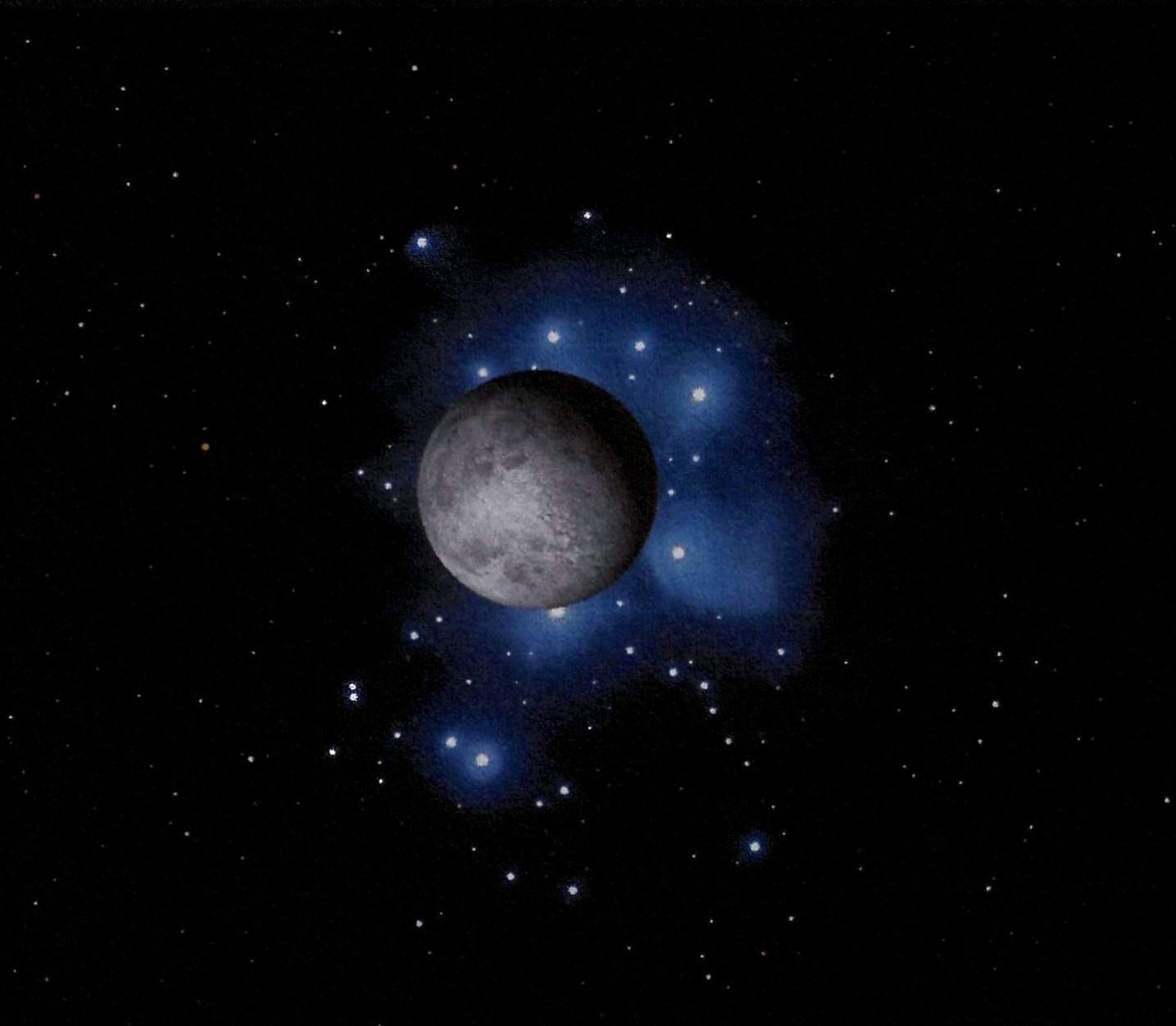
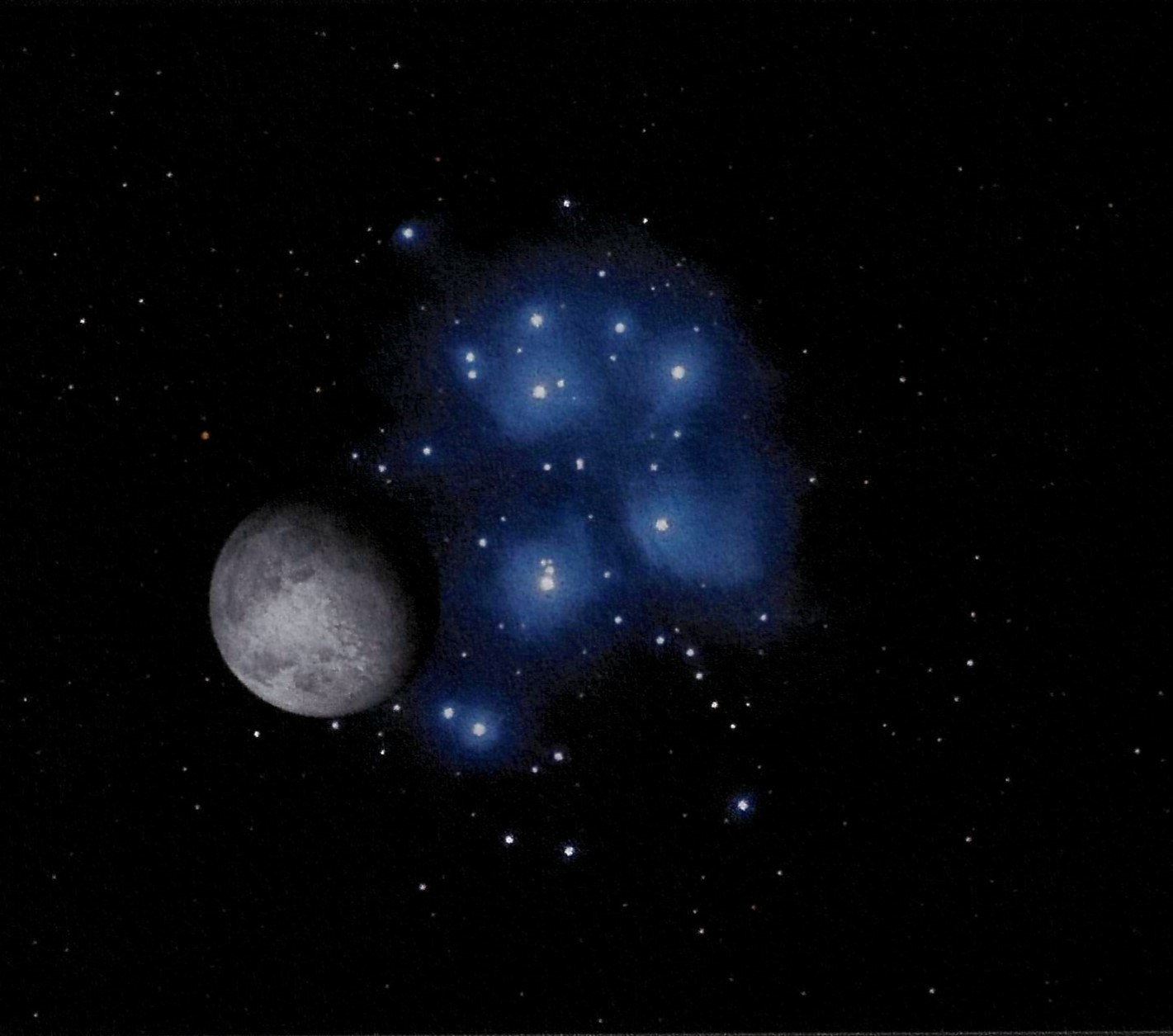
In addition to the timetable, a world map (Mercator projection) is provided, showing the region where the occultation will be visible. The boundaries are in different colors. The Cyan boundaries show the curves of the occultation disappearance or reappearance at moonrise or moonset. A continuous white line marks the nighttime northern and southern limits of the occultation. A continuous blue line denotes the occultation limits occurring during twilight, while a dotted red line depicts the occultation limits occurring in daylight.
For Alcyone and Atlas, these occultations will take place over the northwestern U.S., western Canada and Alaska. For Electra visibility will cover virtually all of North America including Greenland, while for Maia visibility will be confined to much of the U.S., central and eastern Canada and Greenland.
Coming attractions
Typically, an occultation of a specific star is not a "hit-or-miss" proposition; each month the moon will pass in front of that star as seen from various parts of our planet. Such a pattern is called a series and can last a few years or more. The current series of Pleiades occultations began in September 2023 and will continue until July 2029. After 2029 the moon will pass south of the Pleiades until the next series commences in 2042.
After Thursday, the next Pleiades occultation that will be widely visible across North America will take place on Wednesday evening, Dec. 3, occurring on the day before a full moon.
Joe Rao serves as an instructor and guest lecturer at New York's Hayden Planetarium. He writes about astronomy for Natural History magazine, Sky and Telescope and other publications.

Joe Rao is Space.com's skywatching columnist, as well as a veteran meteorologist and eclipse chaser who also serves as an instructor and guest lecturer at New York's Hayden Planetarium. He writes about astronomy for Natural History magazine, Sky & Telescope and other publications. Joe is an 8-time Emmy-nominated meteorologist who served the Putnam Valley region of New York for over 21 years. You can find him on Twitter and YouTube tracking lunar and solar eclipses, meteor showers and more. To find out Joe's latest project, visit him on Twitter.
You must confirm your public display name before commenting
Please logout and then login again, you will then be prompted to enter your display name.
